Table of Contents
How to Avoid Phthalates Exposure: Practical Swaps for a Healthier Home
This page may contain affiliate links. We may earn a commission on purchases, at no additional cost to you. Learn more →
Have you ever wondered why your shower curtains smell so strong when you first hang them? Or why some plastic containers feel softer than others? The answer lies in phthalate compounds – toxic chemicals that have quietly invaded nearly every corner of our homes.
Here's what hit me hard: nearly everyone in America has phthalate metabolites in their body right now. These harmful chemicals are measured in urinary phthalate metabolites tests, and the results show we're all exposed. Research published in Environmental Health Perspectives reveals this isn't just a small problem – it's affecting all of us.
But what’s really concerning are the significant health risks these chemicals present. A 2021 study led by Dr. Leonardo Trasande found that phthalate exposure contributes to approximately 100,000 premature deaths among older Americans each year, primarily from cardiovascular disease. More recent data published in The Lancet EBioMedicine (2025) confirmed phthalate exposure increases risk for cardiovascular disease, metabolic dysfunction, and oxidative stress.
The good news? You can dramatically reduce phthalate exposure in your home. This guide will show you exactly how to identify and how to avoid phthalates in everyday products, make practical swaps, and protect you and your family from these endocrine disrupting chemicals.
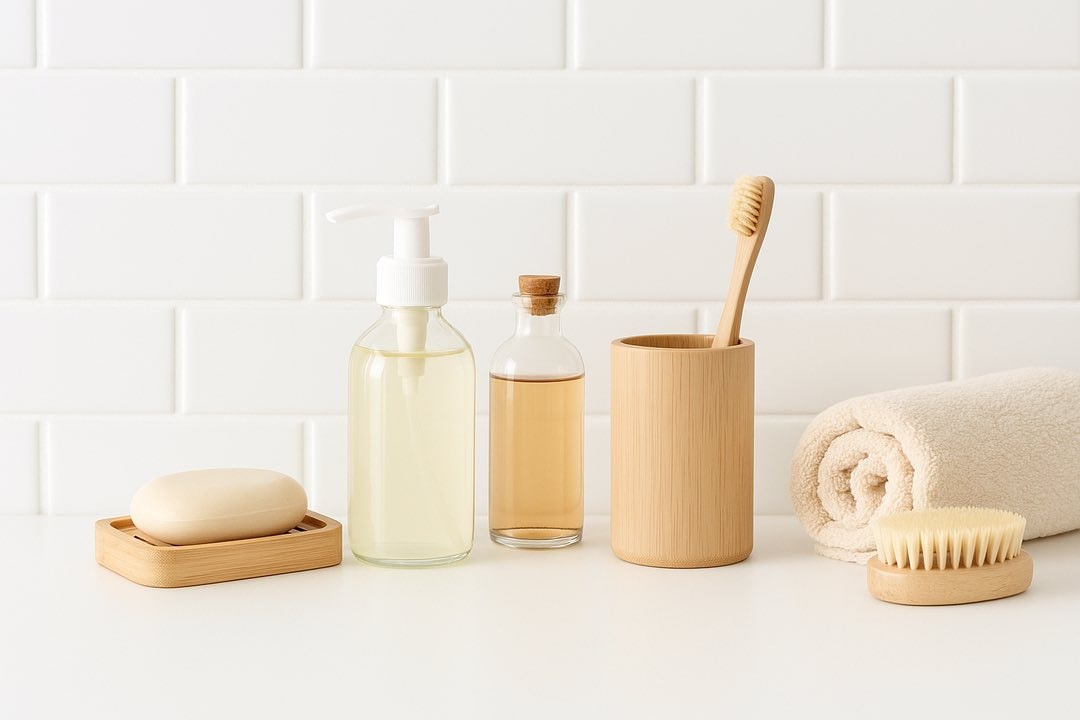
Key Takeaways
-
Phthalates are everywhere. These toxic substances function as plasticizers in plastics and solvents in fragrances. Studies tracking phthalate metabolites show nearly 100% of Americans have detectable levels in their human body, indicating widespread human exposure to these environmental chemicals.
-
The health stakes are serious. Phthalates act as endocrine disruptors and endocrine disrupting chemicals, linked to reproductive health problems, cardiovascular disease, metabolic syndrome, insulin resistance, and reduced semen quality. A 2024 meta-analysis in Frontiers in Public Health further linked urinary phthalate metabolites to increased cancer risk and developmental toxicity.
-
Common sources surround you. Major exposure to phthalates comes from vinyl flooring, shower curtains, nail polish, food packaging, plastic containers, and any product with unlisted "fragrance" ingredients. Processed foods stored in food packaging and beverage containers are significant contributors, as phthalates leach into food stored in these materials.
-
Simple changes work fast. Teen girls switching to phthalate-free cosmetics saw a 27% drop in urinary phthalate metabolites in just 3 days, proving these toxic chemicals are readily excreted once you reduce exposure. Your body's phthalate metabolism and human elimination systems work quickly when you stop the source.
-
Prevention is powerful. While you can't eliminate phthalates entirely from your environment, reducing exposure through practical swaps significantly lowers your toxic burden and improves health outcomes.
-
Vulnerable populations need extra protection. Pregnant women face particular concerns, as in utero exposure affects reproductive development. Studies show higher phthalate exposure in pregnant women can lead to altered male reproductive outcomes and may alter ovarian function, impacting human reproduction and reproductive health across generations.
Understanding Phthalates: The Science Behind the Threat
Phthalates are a family of phthalate compounds used as plasticizers to make plastics flexible and as solvents in fragrances. Common types include diethyl phthalate (DEP), dibutyl phthalate (DBP), di n butyl phthalate, benzyl butyl phthalate (BBP), dimethyl phthalate, diisodecyl phthalate, and diisononyl phthalate.
Why Phthalates Harm Your Health
These environmental chemicals act as endocrine-disrupting chemicals (EDCs) that interfere with hormonal communication in the body. Think of your hormones as your body's communication system – phthalates interfere with these messages, creating chaos in your human body.
Research in Toxicological Sciences and the Scientific World Journal documents how chronic exposure to phthalates affects multiple body systems. The medical literature is clear: exposure to phthalates poses serious health risks.
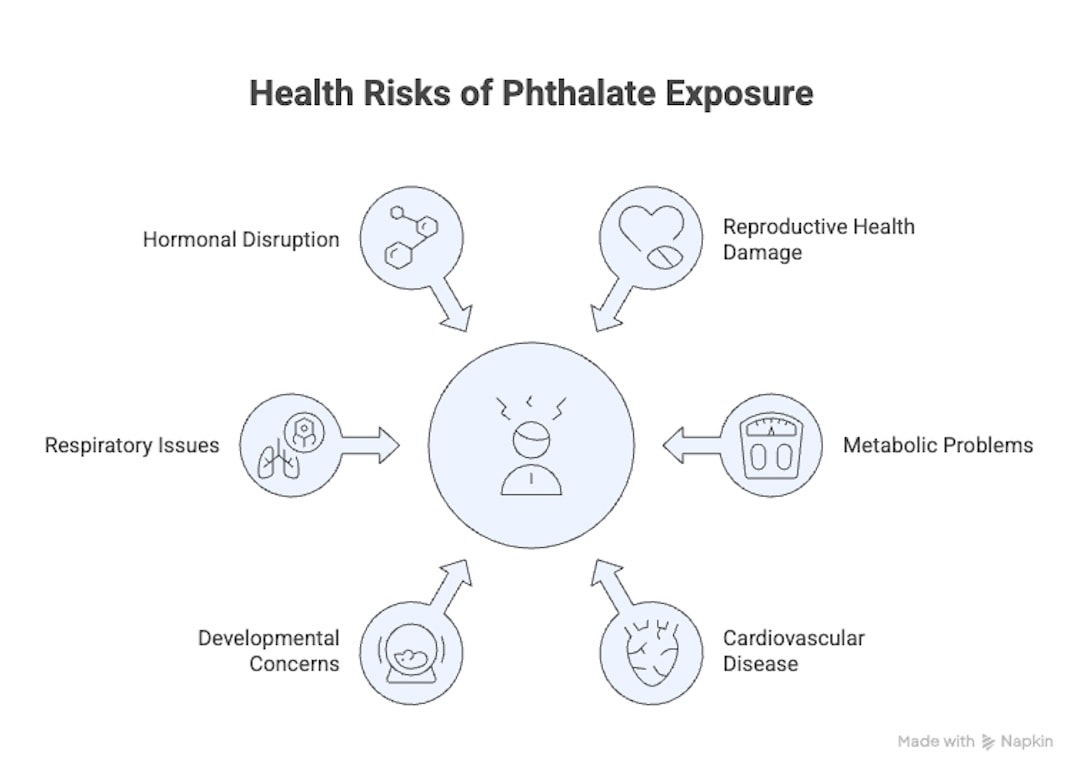
The documented health risks include:
-
Reproductive health damage: Studies on male rat offspring show phthalates in rats reduces fertility. Human epidemiological evidence confirms reduced semen quality in men with higher phthalate exposure
-
Metabolic problems: Links to metabolic syndrome, insulin resistance, and obesity
-
Cardiovascular disease: The connection between phthalate exposure and heart disease is increasingly documented in Environmental Health Perspectives
-
Developmental concerns: In utero exposure affects reproductive development, particularly concerning for pregnant women
-
Respiratory issues: Chronic exposure correlates with asthma and allergies
-
Hormonal disruption: These endocrine disruptors alter ovarian function and affect human reproduction
How Phthalates Enter Your Body
Understanding human exposure pathways helps you protect yourself:
-
Ingestion: When phthalates leach from food packaging and plastic containers into your food
-
Inhalation: Breathing in these toxic chemicals from vinyl flooring, shower curtains, and fragranced products
-
Skin absorption: Direct contact with nail polish, lotions, and other personal care products
-
Dust ingestion: Contaminated dust contains phthalate compounds that settle in your home
The good news about phthalate metabolism? These toxic substances are readily excreted once you stop exposure. Studies on human elimination show phthalates have a relatively short half-life in the human body, meaning your body can clear them quickly.
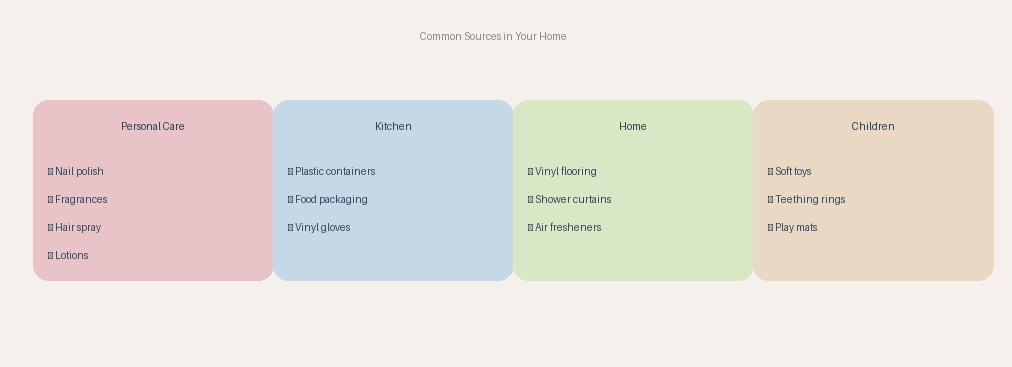
Where Phthalates Hide: Major Sources of Exposure
Let me walk you through where these harmful chemicals hiding in your everyday life.
Personal Care Products & Cosmetics
-
Products to watch: Nail polish is a major source – many formulas contain dibutyl phthalate (DBP) or di n butyl phthalate. Perfumes, hair spray, deodorants, and lotions often contain diethyl phthalate.
-
The "fragrance" loophole: When you see "fragrance" or "parfum" on labels, it may hide phthalate esters. The FDA doesn't require disclosure of these ingredients within fragrance formulations.
-
Chemical exposure route: These products create direct chemical exposure through skin absorption and inhalation. Studies show women generally have higher phthalate exposure than men due to more frequent use of cosmetics and personal care products.
-
What to do: Choose products labeled phthalate-free. Use the Environmental Working Group's Skin Deep database to find safer alternatives. Consider essential oils for natural fragrance instead of synthetic options containing phthalate compounds.
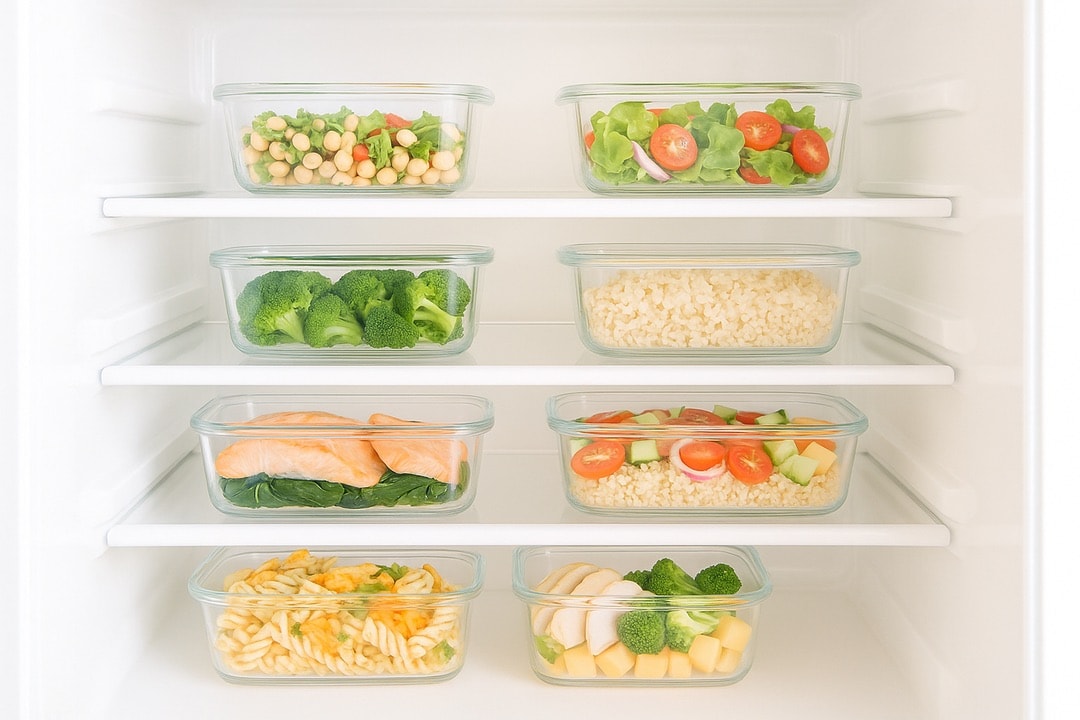
Food & Kitchen Sources
-
Food packaging problems: Plastic containers, particularly those made with PVC, release phthalate esters into food stored inside them. This is especially problematic with fatty foods, as phthalates leach more readily into fats.
-
Processed foods connection: Diets high in processed foods show correlation with higher phthalate exposure. Fast food and packaged items contact multiple plastic surfaces during food processing, from machinery to beverage containers.
-
Food additives concern: While phthalates aren't supposed to be food additives, they migrate from packaging materials during food processing and storage.
-
Heat makes it worse: Microwaving food in plastic containers dramatically increases how phthalates leach into your meals.
-
Swap strategy: Replace plastic containers with glass or stainless steel for food stored in your kitchen. Avoid microwaving anything in plastic. Choose fresh whole foods over processed foods when possible to reduce exposure from food packaging.
Children's Products & Toys
-
Regulatory progress: The Consumer Product Safety Commission has banned eight phthalate compounds in children's toys above 0.1%, including dibutyl phthalate and benzyl butyl phthalate.
-
Remaining concerns: Older toys, hand-me-downs, and imported products may still contain these toxic chemicals. Soft vinyl toys historically contained high levels of phthalate esters.
-
Why children are vulnerable: Kids put toys in their mouths, creating direct exposure to phthalates. They also spend more time on floors, ingesting contaminated dust. In utero exposure and early childhood exposure pose the greatest health risks for reproductive development.
-
Smart choices: Look for toys made from solid wood, natural rubber, or phthalate-free plastics. Choose products certified by safety organizations that test for harmful chemicals.
Home Products & Building Materials
-
Vinyl flooring: This is a major source of exposure to phthalates in homes. The flexible vinyl contains significant amounts of phthalate esters that off-gas into your indoor air.
-
Shower curtains: Those strong-smelling vinyl shower curtains release phthalate compounds into your bathroom air. The smell is literally toxic chemicals volatilizing.
-
Furniture: "Vegan leather" and vinyl upholstery often contain phthalates. Even some carpet backing uses these plasticizers.
-
Air quality impact: These products continuously release environmental chemicals into your home's air, contributing to your daily chemical exposure and creating contaminated dust that settles on surfaces.
-
Better alternatives: Choose polyester or cotton shower curtains. Select wood, tile, or certified phthalate-free vinyl flooring. For furniture, look for natural fabrics or genuinely phthalate-free synthetic materials.
Cleaning & Air Care Products
-
Hidden sources: Scented cleaning products and air fresheners often contain phthalate compounds to help fragrances last longer. The NRDC found phthalates in 12 of 14 tested air fresheners, even those labeled "natural."
-
Multiple exposure routes: These products create inhalation exposure and can leave residues that contribute to contaminated dust in your home.
-
Safer swaps: Use fragrance-free cleaning products or those certified by the EPA Safer Choice program. Consider essential oils in diffusers instead of plug-in air fresheners. Make DIY cleaners with vinegar and baking soda to avoid harmful chemicals entirely.
Practical Swaps to Reduce Phthalate Exposure
Now let's talk solutions. These aren't complicated – they're straightforward changes that dramatically reduce your family's exposure to phthalates.
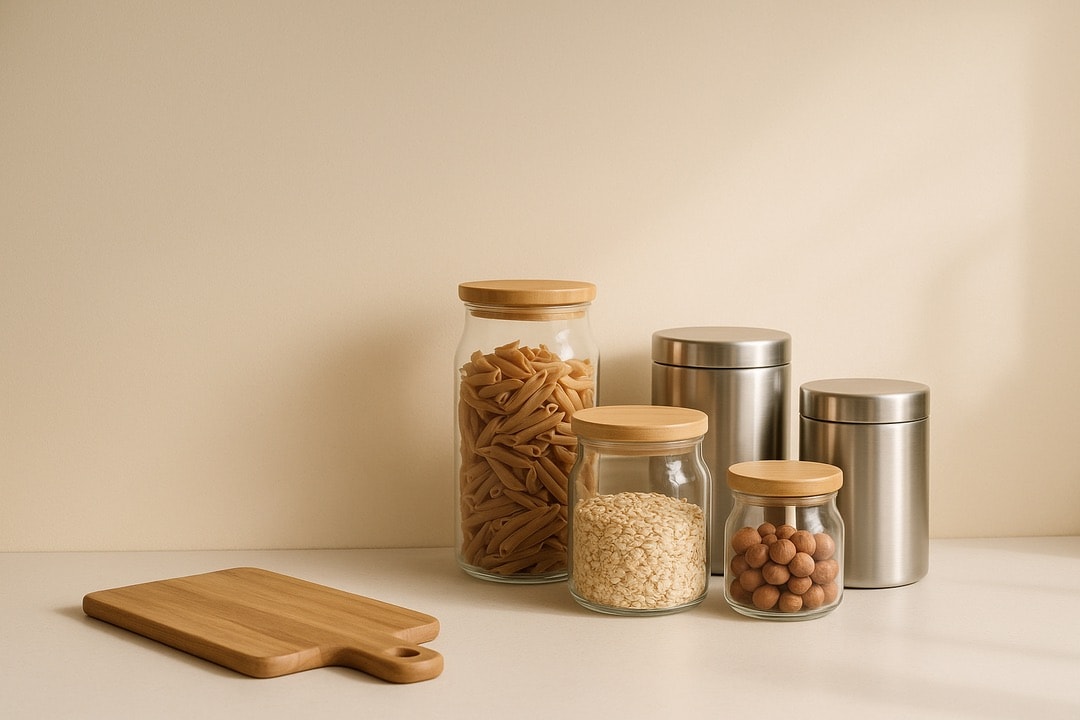
1. Transform Your Kitchen
-
Replace plastic containers immediately. Stop storing food in soft plastic containers. Glass and stainless steel don't leach phthalate esters or other endocrine disrupting compounds into your meals.
-
Never microwave in plastic. Heat accelerates how phthalates leach from plastic containers into your food. Always transfer food to glass or ceramic before heating.
-
Choose better food packaging. When shopping, select products in glass beverage containers instead of plastic. Buy fresh produce without plastic packaging when possible.
-
Cook more at home. This single change helps you avoid the phthalate exposure from food processing in commercial kitchens. Studies show people who eat more processed foods have higher phthalate exposure than those eating fresh, home-cooked meals.
-
Skip plastic wrap. Use beeswax wraps, silicone covers, or simply place a plate over bowls. Traditional plastic wrap often contains phthalate compounds.
2. Clean Up Your Personal Care Routine
-
Scrutinize nail polish. Many formulas contain dibutyl phthalate or di n butyl phthalate. Look for "3-free," "5-free," or even "20-free" polishes that exclude these toxic chemicals.
-
Avoid "fragrance." Choose products marked "fragrance-free" or those using essential oils for scent. This single change eliminates a major source of diethyl phthalate exposure.
-
Check the Environmental Working Group database. Their Skin Deep tool helps you find products without phthalate esters and other endocrine disrupting chemicals.
-
Read actual ingredient lists. Companies trying to eliminate phthalates will specifically state "phthalate-free" on packaging.
-
Results happen fast. Remember that study showing teen girls cut their urinary phthalate metabolites by 27% in just three days? That's how quickly your body eliminates these chemicals once you stop using them.
3. Protect Children
-
Choose certified safe toys. Look for products meeting Consumer Product Safety Commission standards that ban certain phthalates. Select wooden toys, natural rubber, or explicitly phthalate-free plastics.
-
Clean smarter. Use HEPA vacuums to remove contaminated dust from floors where children play. Regular damp mopping captures phthalate-laden dust better than dry sweeping.
-
Wash hands frequently. This simple habit reduces how children ingest phthalate compounds from contaminated dust on their hands.
-
Select phthalate-free baby products. Many manufacturers now advertise phthalate-free bottles, teethers, and changing pads. These products protect your baby from chemical exposure during critical development stages.
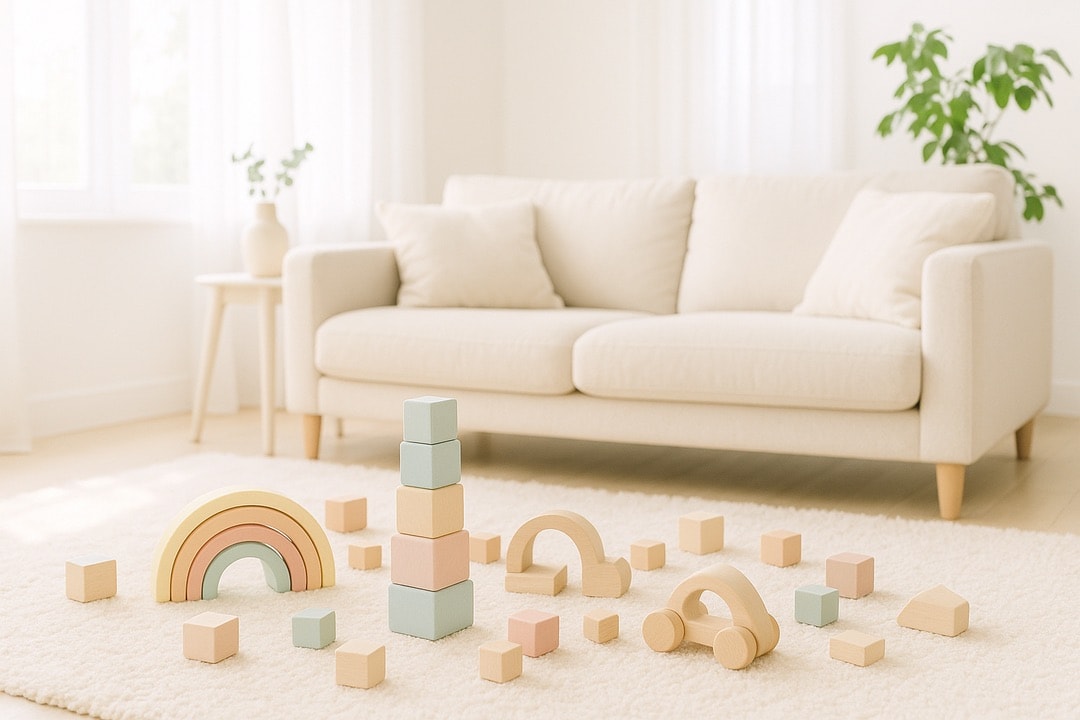
4. Renovate Your Home Environment
-
Replace vinyl flooring. Choose wood, tile, bamboo, or explicitly phthalate-free luxury vinyl. This dramatically reduces your household's chronic exposure to airborne phthalates.
-
Swap shower curtains. Switch from vinyl to polyester, nylon, or cotton curtains. Your bathroom will smell better immediately – that chemical smell is gone because you've removed the source of toxic substances.
-
Upgrade furniture carefully. When buying new furniture, ask specifically about phthalate content. Many manufacturers now offer phthalate-free options in response to consumer demand.
-
Improve air quality. Use HEPA air purifiers to remove phthalate-laden dust from the air. Open windows regularly to reduce the concentration of environmental chemicals indoors.
-
Test and remediate. If you have extensive vinyl flooring or furniture and can't replace it immediately, increase ventilation and cleaning frequency to reduce exposure while you plan upgrades.
5. Simplify Cleaning & Fragrance
-
Eliminate artificial air fresheners. These products add harmful chemicals to your air without any health benefits. The health benefits of eliminating them far outweigh any pleasant scent.
-
Choose fragrance-free and natural cleaning products. Or make your own with simple ingredients like vinegar, baking soda, and castile soap. These work effectively without exposing you to endocrine disrupting compounds.
-
Use essential oils wisely. If you want pleasant scents, essential oils in a diffuser provide aroma without phthalate esters. However, use them cautiously around pets and pregnant women.
-
Read cleaning product labels. Look for EPA Safer Choice certification or explicit "phthalate-free" statements.
6. Focus on Dust Management
-
Vacuum with HEPA filters. Regular vacuuming removes contaminated dust before it can be inhaled or ingested. This is crucial because phthalates in household dust represent a significant exposure pathway.
-
Damp dust surfaces. Wet cleaning captures dust rather than spreading it around.
-
Remove shoes at the door. This prevents tracking in environmental chemicals from outside, reducing the toxic burden in your home.
-
Clean frequently in children's areas. Areas where kids play on the floor need extra attention, as children have higher exposure to contaminated dust.
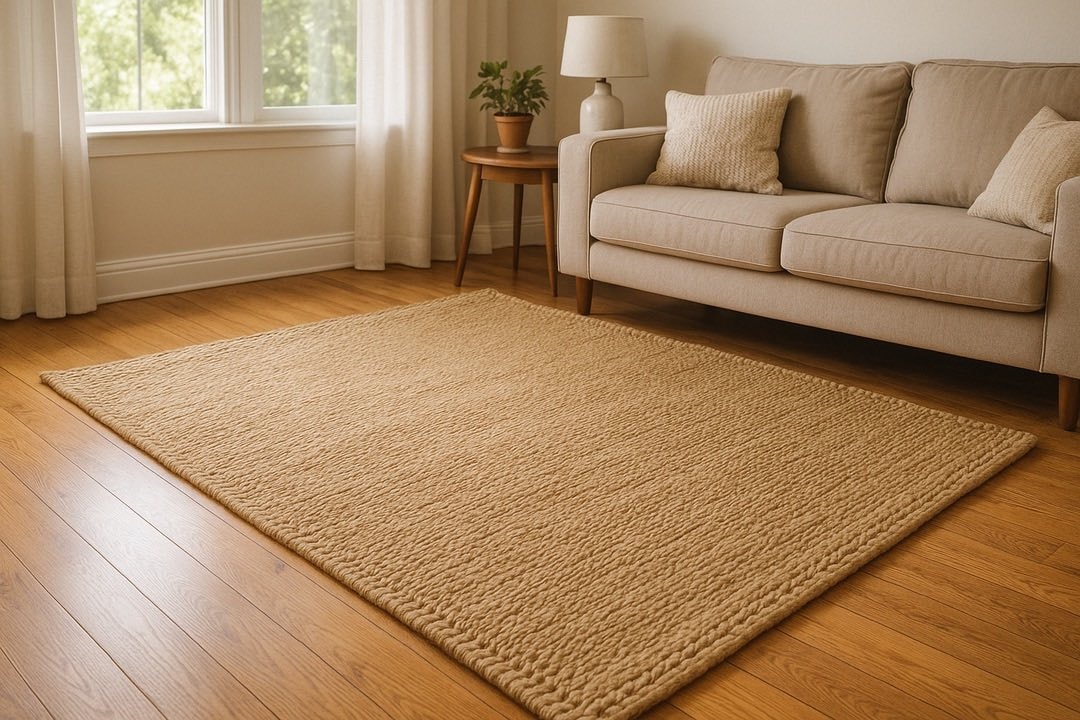
Understanding Your Body's Response
Your body processes phthalate compounds through phthalate metabolism, creating phthalate monoesters and oxidative metabolites measured in urinary phthalate metabolites tests. The human elimination process is efficient – phthalates are readily excreted through urine, with most phthalate esters having a half-life under 24 hours.
Can you remove phthalates from your body? Yes! Once you reduce exposure, your body naturally clears these toxic chemicals. Stay hydrated, eat fiber-rich foods, exercise, go to the sauna (sweat contains twice the phthalate concentration of urine) and be consistent. Urinary phthalate metabolites testing can show your progress over time.
Conclusion: Taking Control of Your Health
You now understand how to avoid phthalates in your daily life. These aren't just abstract toxic chemicals – they're real substances in your home affecting your health right now.
The science is clear: exposure to phthalates harms human health. From reproductive health problems and cardiovascular disease to metabolic syndrome and developmental concerns, the health risks are well-documented in medical literature and Environmental Health Perspectives.
But here's the empowering truth: you can dramatically reduce phthalate exposure starting today. Every plastic container you replace, every fragrance-free product you choose, every vinyl item you swap reduces your toxic burden.
Your action plan:
-
Start in your kitchen – replace plastic containers with glass for food stored in your home
-
Clean up personal care – switch to phthalate-free, fragrance-free products
-
Protect vulnerable family members – prioritize changes for pregnant women and children
-
Upgrade your home – remove vinyl flooring and shower curtains when possible
-
Maintain awareness – continue learning about harmful chemicals and making better choices
The health benefits of reducing exposure extend beyond just lowering phthalate metabolites. You're reducing your overall toxic burden, supporting reproductive health, protecting cardiovascular health, and investing in long-term health outcomes.
This journey to eliminate phthalates from your life isn't about perfection – it's about progress. Every swap matters. Every product you choose carefully contributes to lower chemical exposure. Your home can become a refuge from environmental chemicals rather than a source of them.
Start today.
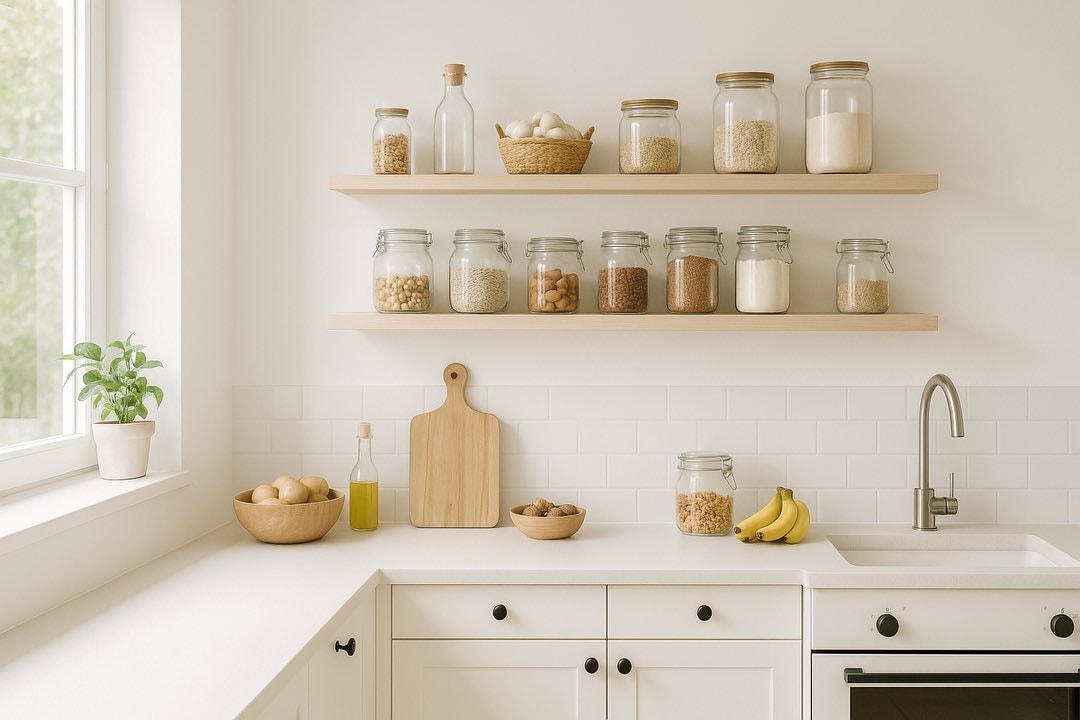
Frequently Asked Questions to How to Avoid Phthalates
Which foods are high in phthalates?
Foods themselves don't naturally contain phthalates, but phthalate exposure from food comes from: Fast food and takeout (exposure during food processing and packaging); Processed foods in plastic packaging; Fatty foods stored in plastic containers (phthalates leach readily into fats); Dairy products that contacted plastic during processing; Foods in plastic beverage containers. Eating fresh, whole foods prepared at home dramatically reduces your dietary phthalate exposure.
What is the biggest source of phthalates?
For most people, the biggest sources are: Food contamination from food packaging and food processing; Personal care products containing "fragrance" with undisclosed phthalate esters; Vinyl products in your home (vinyl flooring, shower curtains); Contaminated dust from products off-gassing phthalate compounds. The specific biggest source varies by lifestyle. Women using many fragranced cosmetics may get most exposure there, while someone with extensive vinyl flooring might face greatest exposure at home.
Do Ziploc bags contain phthalates?
Most Ziploc and similar food storage bags are made from polyethylene, which doesn't typically contain phthalate compounds. However, softer, more flexible plastic wraps and bags may contain these toxic chemicals. Choose products explicitly labeled phthalate-free, or switch to glass containers and beeswax wraps to avoid uncertainty about plastic containers.
How long does it take for phthalates to leave the system?
Phthalates are readily excreted, with most phthalate esters having a half-life under 24 hours in the human body. This means if you stop exposure: Within 24-48 hours, levels drop significantly; Within 3-7 days, you see substantial reduction in urinary phthalate metabolites; Within a few weeks of consistent avoidance, your body reaches new baseline levels
What breaks down phthalates?
In your body, enzymes break down phthalate esters through phthalate metabolism, creating phthalate monoesters and oxidative metabolites that are readily excreted through urine via human elimination pathways.
How to remove phthalates from your body?
Your body naturally eliminates phthalates quickly—most are excreted within 24-48 hours through urine with half-lives ranging from 3-24 hours. To support this process, incorporate cruciferous vegetables like broccoli, cabbage, and brussels sprouts which enhance detoxification pathways, engage in regular sweating through exercise or sauna use (sweat contains twice the phthalate concentration of urine), and consume fiber-rich foods to bind phthalates in the digestive tract and promote excretion. Since phthalates don't accumulate long-term, focusing on reducing ongoing exposure while supporting your body's natural elimination is most effective.













